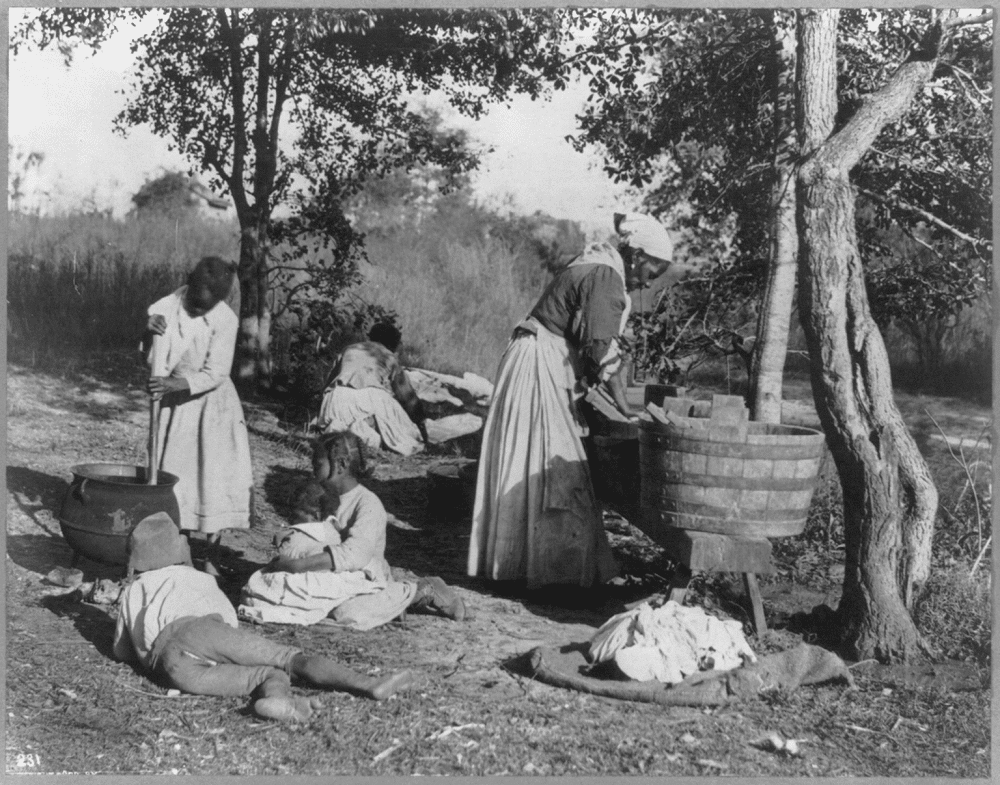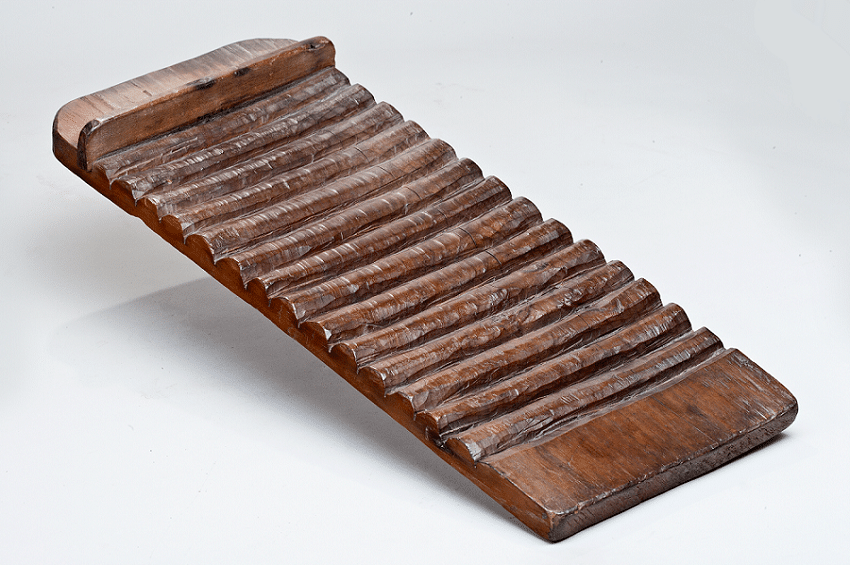Background
When slavery was abolished, newly freed people across the United States were able to decide how to live their own lives for the first time. Many Black men and women wanted to live like working- and middle-class white Americans. Black men wanted to work outside the home to make enough money so Black women could stay home and care for the home and family. But racist economic and social policies prevented most Black men from earning enough to support their families. Most Black women had to find paid work, while still balancing the demands of home and family.
Washing laundry was one of the most popular jobs for married Black women. It allowed them to make a living from their own homes while caring for their children. Sometimes, children even helped their mothers with the laundry work.
Doing laundry before the invention of the washing machine was very labor and time intensive. Anyone with enough money paid someone else to do this difficult chore. This meant laundry work provided a steady source of income for Black women for many decades.
About the Image
These three items illustrate the lives of Reconstruction era Black laundry workers. Workers had to manually scrub each article of clothing against a washboard, like this one, to remove dirt and sweat. This scrubbing required a lot of muscle power and was only one step in the process.
The photograph demonstrates the steps of a home-based laundry operation. On the far left, a young woman stirs hot water over an open fire. Before the laundry work even started, women gathered enough fuel and water to keep the water boiling throughout the process. Once the water boiled, they added clothing items and stirred to loosen dirt and stains. Then they moved the items to a larger washtub, where the workers soaped and scrubbed each of them against the washboard. The woman on the far right is shown doing this back-breaking work. Once the clothing was rinsed, they had to squeeze all excess water out of it. The laundry workers, like the woman in the center background of this photo, then laid out the items to dry. The final step, not pictured here, was starching, ironing, and folding every clothing item. The young boys in the foreground might have been employed in picking up dirty laundry from customers and delivering clean items. As this photo demonstrates, the home laundry business was a family affair.
The final artifact, “Old Aunt Chloe, The Negro Washerwoman,” is a mammy wind-up toy. Mammy toys were figures of Black women that became very popular in the Reconstruction era. They expressed and reinforced common stereotypes about Black women, and taught white children that Black people were inferior. The fact that the doll is a laundry worker illustrates that it was widely known that Black women commonly performed this job. But it does not acknowledge that Black women had few other options for work in a society that viewed them as unequal to whites.
Vocabulary
- mammy: An offensive depiction of a Black nanny, chef, maid, or other domestic worker. Mammy toys became popular in the Reconstruction era, but the stereotypes they promoted persist to this day.
- Reconstruction: The years between 1865 and 1877 when the federal government actively sought to reincorporate the former Confederacy back into the United States and integrate Black Americans into the nation’s economics, politics, and society.
- starching: Adding starch to fabric so that it stays stiff and wrinkle free.
- stereotype: An oversimplified and often prejudiced opinion formed by one group of people about another.
Discussion Questions
- What would it be like to do laundry using these tools?
- Why did so many Black women work as laundresses in the Reconstruction era?
- How does the depiction of the laundry worker in the wind-up toy compare to the reality shown in the photograph?
- Why did laundry work become part of the stereotypes surrounding Black women?
Suggested Activities
- APUSH Connection: 5.10 Reconstruction
- Include these sources in any lesson about the economic reality faced by Black men and women in the Reconstruction era.
- Pair these items with Backlash Against Black Workers to explore why many Black women chose self-employment over working for white people in the Reconstruction era.
- Teach these sources together with the Washer Women’s Strike for a larger lesson about how Black women wielded their labor power in the Reconstruction era.
- Read the life story of Matilda Hughes to learn about a woman who achieved great success and prosperity in the laundry business.
- Invite students to read about PepsiCo’s decision to change the Aunt Jemima pancake logo and brand to learn more about how racial stereotypes from the Reconstruction era are still prevalent in U.S. culture. Then ask students to research another brand that perpetuates stereotypes and write a letter to the company explaining why it needs to be changed.
Themes
WORK, LABOR, AND ECONOMY; DOMESTICITY AND FAMILY
New-York Historical Society Curriculum Library Connections
- For information about Black life in the Reconstruction era, see Black Citizenship in the Age of Jim Crow.









